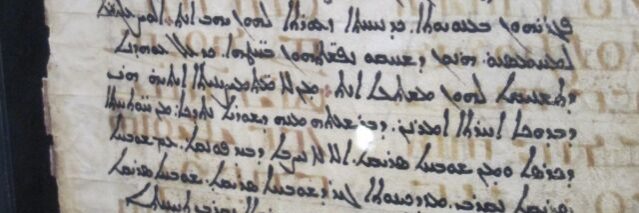Source: Museum of the Bible.
An ancient inscription has been uncovered among a medieval manuscript with experts once believing the oldest map of the stars was lost forever.
Greek astronomer Hipparchus is regarded by many as being the first person to map the stars and celestial objects of the night sky and did so around 129 BCE.
Although their have been written accounts of him doing this, the physical evidence was never there, that is until biblical historian Peter Williams and his students from the University of Cambridge noticed something strange about a medieval Christian manuscript called the Codex Climaci Rescriptus.
It was originally kept in Egypt at Saint Catherine’s Monastery but was transferred to Washington D.C where it is now part of the Museum of the Bible.
The manuscript has paragraphs of the Old and New Testament in Greek and believed to have been written around the 6th Century.
Even though there are many manuscripts like this, Williams took a keen eye to this particular one because one of his students pointed out there was Greek text-under neath the biblical ones-that was written by ancient astronomer Eratosthenes.
A fragment of the world's oldest star map has been uncovered in a medieval manuscript at St. Catherine's Monastery in Sinai.
It may be from a copy of the long-lost star catalog of 2nd century BCE Greek astronomer Hipparchus.
?@LiveScience#Classics #Space #Astronomy #History pic.twitter.com/WPewqCGEqk
— The Classical Compendium ?️ (@TheClassicalCo) October 25, 2022
With this in mind they used multispectral imaging technology to uncover the hidden text.
It works by taking multiple different coloured photos of the transcript then combining them with X-ray and infrared images to reveal what was written hundreds of years before.
Williams sent the text to historian Victor Gysembergh in Paris where he said, “It was immediately clear we had star coordinates” and even managed to translate one of the texts with his colleague Emanuel Zingg of Sorbonne University.
The text reads out several star coordinates: “Corona Borealis, lying in the northern hemisphere, in length spans 9°¼ from the first degree of Scorpius to 10°¼ in the same zodiacal sign (i.e. in Scorpius). In breadth it spans 6°¾ from 49° from the North Pole to 55°¾,” the text says.
“Within it, the star (β CrB) to the West next to the bright one (α CrB) leads (i.e. is the first to rise), being at Scorpius 0.5°. The fourth star (ι CrB) to the East of the bright one (α CrB) is the last (i.e. to rise) [. . .]10 49° from the North Pole. Southernmost (δ CrB) is the third counting from the bright one (α CrB) towards the East, which is 55°¾ from the North Pole.”
Although historians are reluctant to 100 per cent say it is the missing work, they are generally sure that this hidden text belongs to Hipparchus’ lost Star Catalogues.





